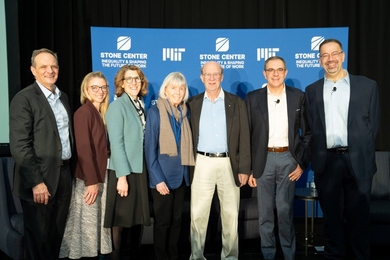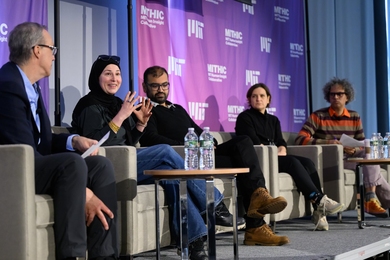Three years ago, Congress and the administration projected deep sustained cuts in federally funded research programs. This year, in response to unprecedented advocacy efforts and the leadership of key members of Congress, each of the major research-supporting agencies received increases at levels above inflation.
President Charles Vest commented, "Bipartisan support in Congress for university research has increased dramatically, and the community should be very pleased with the fiscal year 1999 budget. After all, just three years ago a 20-30 percent decline was projected. The sustainability of this growth is tied to the economy and to politics, both of which are volatile."
The National Institutes of Health led the way with an astonishing 14.6 percent ($2 billion) increase to $15.6 billion. "At a 15 percent rate, NIH could be a $26 billion agency in fiscal 2003, in just four more budget cycles," said John C. Crowley, head of the MIT Washington Office.
Mr. Crowley said the increases were the result of a lot of hard work over the past few years by many members of Congress, including the Massachusetts delegation, industry, the scientific and engineering communities, research universities and many national organizations including The Science Coalition, a group of more than 400 national organizations that MIT helped to organize in 1994 specifically to advocate for federal government investment in science and engineering research.
"As welcome as these increases are, they will be difficult to sustain in the budget request for fiscal 2000 and then in the next Congress," Mr. Crowley said. "We expect another constrained budget and a difficult budget debate in Congress next year. NIH will likely continue to receive favored treatment. However, the sciences and engineering programs of Defense, Energy, NASA and the National Science Foundation will once again face intense pressure."
Fiscal 1999 appropriations for federal research programs were completed with the passage of a major omnibus spending package on October 20. Congress completed individual action on five appropriations bills and wrapped the remaining eight into a massive funding package including substantial emergency funding. President Clinton signed the omnibus bill into law on October 21.
Total R&D funding received substantial increases compared to last year (see first table below). After five years of real cuts, Department of Defense (DOD) basic research received a 6.6 percent funding increase. DOD support for advanced research investigations at MIT Lincoln Laboratory, one of the nation's federally funded research and development centers, increased 6 percent to $19.6 million. (Lincoln's total budget is estimated to be $373 million for approximately 300 projects over the federal fiscal year of October 1, 1998 to September 30, 1999.)
National Science Foundation funding was increased by 7.1 percent overall, with NSF's Research and Related Activities account getting a boost of almost 9 percent. NASA funding was stable overall, with increases in the Office of Space Science (6.8 percent) and Academic Programs (15.4 percent). The Department of Energy received substantial increases in science programs (8 percent) and unexpected last-minute increases for its renewable energy and energy conservation programs.
Education programs also faired well in the appropriations process (see second table below). The GAANN program (Graduate Assistance in Areas of National Need) received a 3.3 percent funding increase. However, the Javits Fellowship program funding is to come out of GAANN and the final amount is not yet determined. Both the National Endowment for the Humanities and the National Endowment for the Arts were funded at the fiscal 1998 level.
Before adjourning, Congress also considered two symbolic pieces of legislation in support of the nation's scientific enterprise. By unanimous consent, the Senate approved S.2217, the Federal Research Investment Act. This bill, spearheaded by Senators Bill Frist (R-TN), Jay Rockefeller (D-WV) and Joseph Leiberman (D-CT), authorizes a doubling of nondefense R&D in 12 years.
Meanwhile, the House approved a resolution endorsing the national science policy study lead by Congressman Vernon Ehlers (R-MI) and released by the House Science Committee in late September. While neither of these bills will become law, together they provide momentum for and set a positive tone for the deliberations on congressional science policy and research funding that will occur in the next Congress.
More detail on federal funding is available from the American Association for the Advancement of Science web site and the American Association of Universities web site.
A version of this article appeared in MIT Tech Talk on November 4, 1998.





